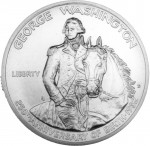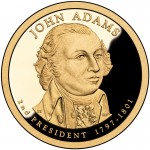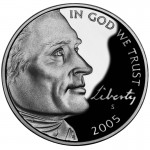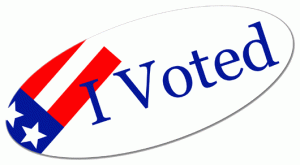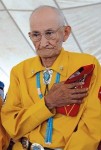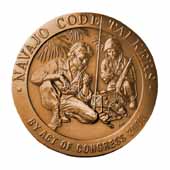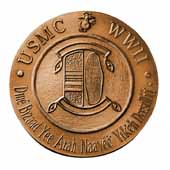And You Think This Election Is Bad
Contentious elections date back to the founding of this nation. Although the first two were handily won by George Washington, the third election in 1796 produced an electoral contest that would set the tone for years to come. The Federalist Party nominated Vice President John Adams and former Governor Thomas Pinckney of South Carolina. Running against the favored Adams was the Democratic-Republican ticket of former Secretary of State Thomas Jefferson of Virginia and Senator Aaron Burr of New York.At that time, it was not customary for the candidates to campaign. During the campaign Adams remained in his home in Quincy and Jefferson stayed at Monticello while members of their respective parties campaigned for their nominees. In a near evenly divided country, Adams won the electoral votes 71 to 68. Since Jefferson came in second, the constitution mandated that the second place electoral vote recipient would become vice president.
The election prompted the introduction of what would be the 12th Amendment to the United States Constitution that changed the ballot would be cast for a president/vice president as a single ticket. But the amendment did not see floor action and left the door open for probably the most contentious election in United States history.
The election of 1800 was a rematch between Adams and Jefferson. For this election, the Federalists nominated General Charles Pinckney of South Carolina. Not only was Gen. Pinckney a war hero but was the older bother of Thomas Pinckney who ran with Adams in 1796. The Democratic-Republican Party brought back Jefferson and Burr with a renewed spirit to elect their candidates.This was the United States’ first really partisan election. The evenly divided parties, electorate, and was one of the first where what we call today “the ground game” was very important especially since each state was allowed to choose its own election day. With the election lasting from April to October, the election came down to the vote in South Carolina with an electoral tie of 65-65. Even though Pinckney was a South Carolinian, the Democratic-Republican state majority chose the state’s eight electors.
Constitutionally in 1800, each elector was to cast two votes, which is where the problem began. Because electors that voted for Jefferson also voted for Burr, both were electorally tied. When all eight electors voted for both Jefferson and Burr, the electoral vote would be tied between Jefferson and Burr.
Two hundred years before Bush v. Gore, there were contended electoral ballots as they were opened and counted on February 11, 1801. First, there was the improperly filed election certificate from Georgia that did not provide the constitutionally-mandated “List of all the Persons voted for, and of the Number of Votes for each.” Vice President Jefferson, in his role as President of the Senate, counted the ballot for himself and Burr. No objections were raised from the floor.When the votes from New York were counted, one elector voted twice for Aaron Burr in violation of Electoral College rules. After a contentious discussion, the New York delegation convinced the Jefferson to switch the vote for Jefferson. This gave Jefferson and Burr and official 73-73 electoral vote tie.
As required by the constitution, Jefferson adjourned the joint session of congress and the House of Representatives convened to break the electoral tie. When the House of Representatives selects the president, each state delegation is given one vote and the candidate with the majority wins. Since there were 16 states, the winner must receive the vote of nine state delegations. From February 11 through February 17, the House held 35 ballots with the result of Jefferson receiving 8 votes, Burr received 6, and two submitted blank ballots.
Federalists would not support Jefferson and the Democratic-Republicans did not hold enough state delegations to sway the election. Alexander Hamilton became the lone bi-partisan voice amongst the Federalists. Even though the Federalists did not like Jefferson, Hamilton embarked on a letter writing campaign to convince at least one delegation to change their vote because he felt Jefferson was “by far not so dangerous a man” as Burr. On the 36th ballot, Maryland and Vermont changed their ballots from blank and voted for Jefferson as President.
This would not be the last time that Hamilton worked to defeat Burr. In 1804, Morgan Lewis defeated Burr in the race for governor of New York with assistance from Hamilton. After Burr learned that Hamilton helped Lewis defeat Burr and that Hamilton allegedly said he had “a still more despicable opinion” of Burr, Burr demanded an apology. Hamilton refused saying he could not remember saying this.This lead to not-so-nice letters being sent between the two men and mutual friends tried to intervene. Despite the pleas against it, a duel was scheduled for July 11, 1804 in Weehawken, New Jersey. Vice President Aaron Burr shot Alexander Hamilton in the abdomen while Hamilton’s shot struck a tree branch over Burr’s head. Burr was shuttle back to Washington, D.C. and Hamilton was taken to a friend in New York City where he died on July 12, 1804.
Although this year’s election may seem contentious, it will not lead the the death of a participant. Aside from the fact that duels were outlawed after the Burr-Hamilton Duel, we have become more “sophisticated” in managing our disputes. Just ask Al Gore!
On this Election Day, it is your duty as a citizen of the United States of America to VOTE! Make sure you do so today.
- Coin images courtesy of the U.S. Mint.
- Image of the $10 Federal Reserve Note courtesy of WikiMedia Commons.
- The “I Voted” sticker image from RocketXL Launchpad.
